aliensteel23
29 posts
Latest Posts by aliensteel23
who’s still on tumblr?
reblog if you plan on remaining active.
just wanna see if the number’s still huge! ☆
“blatherin blatherskite!”

Gizmoduck is on the town! Love the Ducktales reboot, the designs, the production quality, and the AMAZING voice cast!!!
“Bless me bagpipes”
“*gasp*…boys?!”
The big Season 2 cliffhanger shown at the end of the Season 1 finale of DuckTales 2017.
😥Poor Scrooge
Once again this episode is making me even more sad when i do these things.

Scrooge is still fuming after the argument on the plane with everyone.
Mrs. Beakley and Webby are leaving the manor with packed bags and uncertainty if they’ll come back. With Scrooge barely batting an eye and dismissing them quickly.

Webby is clearly still hurt after what Scrooge had said to her

“Well you’ve successfully pushed your family and everyone who cared about you away, Again. I hope your happy”. Dang, You can just hear the venom in her voice in that comment.

This freaking shot of duckworth leaving as well actually made me gasp in shock. I kinda forgot he was there but knowing that he was leaving to was heartbreaking.
Then we see Scrooge grab a key and go into a room which seems to be locked up for a long time due to the dust and the chair being covering up.


The realization slowly coming onto his face as he just sits there, contemplating the events. It quickly goes to mad then regret. (God this show is torturing me.)


Then we see that he did do what everyone thought he didn’t. He built more spaceships, he sent astronauts into space to look for her, with them never finding her ship or even losing the rescue ships in the process.
It was to the point of spending almost all of his money from his own bin to fund it and keep it going. But it got too expensive to the point where he was forced to shut it down completely, with Scrooge feeling like he failed to protect Della and try to bring her home and became truly alone in the process.


“I AM”
That line broke the dam whatever I was trying to hold in and had me silently sobbing as the credits rolled.
The way that line was acted, the gruff exterior of his stubbornness and his mind being made up and yet his voice sounds close to breaking as tears roll down his cheeks.
David Tennant…..it’s now the 2nd time this man has made me cry when I watch a show with him in it.
This Finale is gonna be amazing, but we all know we’re gonna be on the floor once it’s over.
New things in space
Solar System: Things to Know This Week
Our Dawn mission to the asteroid belt is no ordinary deep space expedition.
Instead of traditional chemical rockets, the spacecraft uses sophisticated ion engines for propulsion. This enabled Dawn to become the first mission to orbit not one, but two different worlds — first the giant asteroid Vesta and now the dwarf planet Ceres. Vesta and Ceres formed early in the solar system’s history, and by studying them, the mission is helping scientists go back in time to the dawn of the planets. To mark a decade since Dawn was launched on Sept. 27, 2007, here are 10 things to know about this trailblazing mission.
1. Ion Engines: Not Just for Sci-Fi Anymore

Most rocket engines use chemical reactions for propulsion, which tend to be powerful but short-lived. Dawn’s futuristic, hyper-efficient ion propulsion system works by using electricity to accelerate ions (charged particles) from xenon fuel to a speed seven to 10 times that of chemical engines. Ion engines accelerate the spacecraft slowly, but they’re very thrifty with fuel, using just milligrams of xenon per second (about 10 ounces over 24 hours) at maximum thrust. Without its ion engines, Dawn could not have carried enough fuel to go into orbit around two different solar system bodies. Try your hand at an interactive ion engine simulation.
2. Time Capsules

Scientists have long wanted to study Vesta and Ceres up close. Vesta is a large, complex and intriguing asteroid. Ceres is the largest object in the entire asteroid belt, and was once considered a planet in its own right after it was discovered in 1801. Vesta and Ceres have significant differences, but both are thought to have formed very early in the history of the solar system, harboring clues about how planets are constructed. Learn more about Ceres and Vesta—including why we have pieces of Vesta here on Earth.
3. Portrait of a Dwarf Planet

This view of Ceres built from Dawn photos is centered on Occator Crater, home of the famous “bright spots.” The image resolution is about 460 feet (140 meters) per pixel.
Take a closer look.
4. What’s in a Name?
Craters on Ceres are named for agricultural deities from all over the world, and other features carry the names of agricultural festivals. Ceres itself was named after the Roman goddess of corn and harvests (that’s also where the word “cereal” comes from). The International Astronomical Union recently approved 25 new Ceres feature names tied to the theme of agricultural deities. Jumi, for example, is the Latvian god of fertility of the field. Study the full-size map.
5. Landslides or Ice Slides?

Thanks to Dawn, evidence is mounting that Ceres hides a significant amount of water ice. A recent study adds to this picture, showing how ice may have shaped the variety of landslides seen on Ceres today.
6. The Lonely Mountain

Ahuna Mons, a 3-mile-high (5-kilometer-high) mountain, puzzled Ceres explorers when they first found it. It rises all alone above the surrounding plains. Now scientists think it is likely a cryovolcano — one that erupts a liquid made of volatiles such as water, instead of rock. “This is the only known example of a cryovolcano that potentially formed from a salty mud mix, and that formed in the geologically recent past,” one researcher said. Learn more.
7. Shining a Light on the Bright Spots

The brightest area on Ceres, located in the mysterious Occator Crater, has the highest concentration of carbonate minerals ever seen outside Earth, according to studies from Dawn scientists. Occator is 57 miles (92 kilometers) wide, with a central pit about 6 miles (10 kilometers) wide. The dominant mineral of this bright area is sodium carbonate, a kind of salt found on Earth in hydrothermal environments. This material appears to have come from inside Ceres, and this upwelling suggests that temperatures inside Ceres are warmer than previously believed. Even more intriguingly, the results suggest that liquid water may have existed beneath the surface of Ceres in recent geological time. The salts could be remnants of an ocean, or localized bodies of water, that reached the surface and then froze millions of years ago. See more details.
8. Captain’s Log
Dawn’s chief engineer and mission director, Marc Rayman, provides regular dispatches about Dawn’s work in the asteroid belt. Catch the latest updates here.
9. Eyes on Dawn
Another cool way to retrace Dawn’s decade-long flight is to download NASA’s free Eyes on the Solar System app, which uses real data to let you go to any point in the solar system, or ride along with any spacecraft, at any point in time—all in 3-D.
10. No Stamp Required

Send a postcard from one of these three sets of images that tell the story of dwarf planet Ceres, protoplanet Vesta, and the Dawn mission overall.
Make sure to follow us on Tumblr for your regular dose of space: http://nasa.tumblr.com.
The marvels of space
Cassini Spacecraft: Top Discoveries
Our Cassini spacecraft has been exploring Saturn, its stunning rings and its strange and beautiful moons for more than a decade.

Having expended almost every bit of the rocket propellant it carried to Saturn, operators are deliberately plunging Cassini into the planet to ensure Saturn’s moons will remain pristine for future exploration – in particular, the ice-covered, ocean-bearing moon Enceladus, but also Titan, with its intriguing pre-biotic chemistry.
Let’s take a look back at some of Cassini’s top discoveries:
Titan

Under its shroud of haze, Saturn’s planet-sized moon Titan hides dunes, mountains of water ice and rivers and seas of liquid methane. Of the hundreds of moons in our solar system, Titan is the only one with a dense atmosphere and large liquid reservoirs on its surface, making it in some ways more like a terrestrial planet.

Both Earth and Titan have nitrogen-dominated atmospheres – over 95% nitrogen in Titan’s case. However, unlike Earth, Titan has very little oxygen; the rest of the atmosphere is mostly methane and traced amounts of other gases, including ethane.

There are three large seas, all located close to the moon’s north pole, surrounded by numerous smaller lakes in the northern hemisphere. Just one large lake has been found in the southern hemisphere.
Enceladus

The moon Enceladus conceals a global ocean of salty liquid water beneath its icy surface. Some of that water even shoots out into space, creating an immense plume!

For decades, scientists didn’t know why Enceladus was the brightest world in the solar system, or how it related to Saturn’s E ring. Cassini found that both the fresh coating on its surface, and icy material in the E ring originate from vents connected to a global subsurface saltwater ocean that might host hydrothermal vents.

With its global ocean, unique chemistry and internal heat, Enceladus has become a promising lead in our search for worlds where life could exist.
Iapetus

Saturn’s two-toned moon Iapetus gets its odd coloring from reddish dust in its orbital path that is swept up and lands on the leading face of the moon.

The most unique, and perhaps most remarkable feature discovered on Iapetus in Cassini images is a topographic ridge that coincides almost exactly with the geographic equator. The physical origin of the ridge has yet to be explained…

It is not yet year whether the ridge is a mountain belt that has folded upward, or an extensional crack in the surface through which material from inside Iapetus erupted onto the surface and accumulated locally.
Saturn’s Rings

Saturn’s rings are made of countless particles of ice and dust, which Saturn’s moons push and tug, creating gaps and waves.

Scientists have never before studied the size, temperature, composition and distribution of Saturn’s rings from Saturn obit. Cassini has captured extraordinary ring-moon interactions, observed the lowest ring-temperature ever recorded at Saturn, discovered that the moon Enceladus is the source for Saturn’s E ring, and viewed the rings at equinox when sunlight strikes the rings edge-on, revealing never-before-seen ring features and details.
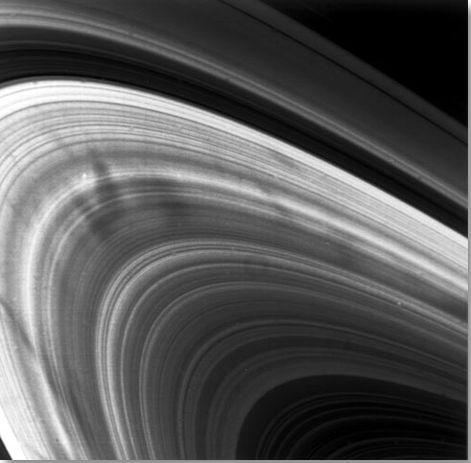
Cassini also studied features in Saturn’s rings called “spokes,” which can be longer than the diameter of Earth. Scientists think they’re made of thin icy particles that are lifted by an electrostatic charge and only last a few hours.
Auroras

The powerful magnetic field that permeates Saturn is strange because it lines up with the planet’s poles. But just like Earth’s field, it all creates shimmering auroras.

Auroras on Saturn occur in a process similar to Earth’s northern and southern lights. Particles from the solar wind are channeled by Saturn’s magnetic field toward the planet’s poles, where they interact with electrically charged gas (plasma) in the upper atmosphere and emit light.
Turbulent Atmosphere

Saturn’s turbulent atmosphere churns with immense storms and a striking, six-sided jet stream near its north pole.

Saturn’s north and south poles are also each beautifully (and violently) decorated by a colossal swirling storm. Cassini got an up-close look at the north polar storm and scientists found that the storm’s eye was about 50 times wider than an Earth hurricane’s eye.

Unlike the Earth hurricanes that are driven by warm ocean waters, Saturn’s polar vortexes aren’t actually hurricanes. They’re hurricane-like though, and even contain lightning. Cassini’s instruments have ‘heard’ lightning ever since entering Saturn orbit in 2004, in the form of radio waves. But it wasn’t until 2009 that Cassini’s cameras captured images of Saturnian lighting for the first time.

Cassini scientists assembled a short video of it, the first video of lightning discharging on a planet other than Earth.

Cassini’s adventure will end soon because it’s almost out of fuel. So to avoid possibly ever contaminating moons like Enceladus or Titan, on Sept. 15 it will intentionally dive into Saturn’s atmosphere.

The spacecraft is expected to lose radio contact with Earth within about one to two minutes after beginning its decent into Saturn’s upper atmosphere. But on the way down, before contact is lost, eight of Cassini’s 12 science instruments will be operating! More details on the spacecraft’s final decent can be found HERE.
Make sure to follow us on Tumblr for your regular dose of space: http://nasa.tumblr.com
Another Earth? Or another home?
We Just Identified More Than 200 New (Potential) Planets
The Kepler space telescope is our first mission capable of identifying Earth-size planets around other stars. On Monday, June 19, 2017, scientists from many countries gathered at our Ames Research Center to talk about the latest results from the spacecraft, which include the identification of more than 200 potential new worlds! Here’s what you need to know:
We found 219 new planet candidates.

All of these worlds were found in a patch of sky near the Cygnus constellation in our Milky Way galaxy. Between 2009 and 2013, Kepler searched more than 200,000 stars in the region for orbiting planets. The 219 new planet candidates are part of the more than 4,000 planet candidates and 2,300 confirmed planets Kepler has identified to date.
Ten of these worlds are like our own.

Out of the 219 new planet candidates, 10 are similar to Earth. The planets are about the right size to be a terrestrial world, and orbit their star in the habitable zone–the range of distances from a star where liquid water could pool on the surface of a rocky planet.
Small planets come in two sizes.

Kepler has opened up our eyes to the existence of many small worlds. It turns out a lot of these planets are either approximately 1.5 times the size of Earth or just smaller than Neptune. The cool names given to planets of these sizes? Super Earths and mini-Neptunes.
Some of the new planets could be habitable.

Water is a key ingredient to life as we know it. Many of the new planet candidates are likely to have small rocky cores enveloped by a thick atmosphere of hydrogen and helium, and some are thought to be ocean worlds. That doesn’t necessarily mean the oceans of these planets are full of water, but we can dream, can’t we?
Other Earths are out there.

Kepler’s survey has made it possible for us to measure the number of Earth-size habitable zone planets in our galaxy. Determining how many planets like our own that exist is the big question we’ll explore next.
The hunt for new planets continues.

Kepler continues to search for planets in different regions of space. With the launch of our Transiting Exoplanet Survey Satellite (TESS) and the James Webb Space Telescope (JWST) in 2018, we’re going to search for planets nearest the sun and measure the composition of their atmospheres. In the mid-2020s, we have our sights on taking a picture of small planets like Earth with our Wide-Field Infrared Survey Telescope (WFIRST).
*All images of planets are artist illustrations.
Make sure to follow us on Tumblr for your regular dose of space: http://nasa.tumblr.com
The wonders of Mars
1,000 Days in Orbit: MAVEN’s Top 10 Discoveries at Mars
On June 17, our MAVEN (Mars Atmosphere and Volatile Evolution Mission) will celebrate 1,000 Earth days in orbit around the Red Planet.

Since its launch in November 2013 and its orbit insertion in September 2014, MAVEN has been exploring the upper atmosphere of Mars. MAVEN is bringing insight to how the sun stripped Mars of most of its atmosphere, turning a planet once possibly habitable to microbial life into a barren desert world.

Here’s a countdown of the top 10 discoveries from the mission so far:
10. Unprecedented Ultraviolet View of Mars

Revealing dynamic, previously invisible behavior, MAVEN was able to show the ultraviolet glow from the Martian atmosphere in unprecedented detail. Nightside images showed ultraviolet “nightglow” emission from nitric oxide. Nightglow is a common planetary phenomenon in which the sky faintly glows even in the complete absence of eternal light.
9. Key Features on the Loss of Atmosphere

Some particles from the solar wind are able to penetrate unexpectedly deep into the upper atmosphere, rather than being diverted around the planet by the Martian ionosphere. This penetration is allowed by chemical reactions in the ionosphere that turn the charged particles of the solar wind into neutral atoms that are then able to penetrate deeply.
8. Metal Ions

MAVEN made the first direct observations of a layer of metal ions in the Martian ionosphere, resulting from incoming interplanetary dust hitting the atmosphere. This layer is always present, but was enhanced dramatically by the close passage to Mars of Comet Siding Spring in October 2014.
7. Two New Types of Aurora

MAVEN has identified two new types of aurora, termed “diffuse” and “proton” aurora. Unlike how we think of most aurorae on Earth, these aurorae are unrelated to either a global or local magnetic field.
6. Cause of the Aurorae

These aurorae are caused by an influx of particles from the sun ejected by different types of solar storms. When particles from these storms hit the Martian atmosphere, they can also increase the rate of loss of gas to space, by a factor of ten or more.
5. Complex Interactions with Solar Wind

The interactions between the solar wind and the planet are unexpectedly complex. This results due to the lack of an intrinsic Martian magnetic field and the occurrence of small regions of magnetized crust that can affect the incoming solar wind on local and regional scales. The magnetosphere that results from the interactions varies on short timescales and is remarkably “lumpy” as a result.
4. Seasonal Hydrogen

After investigating the upper atmosphere of the Red Planet for a full Martian year, MAVEN determined that the escaping water does not always go gently into space. The spacecraft observed the full seasonal variation of hydrogen in the upper atmosphere, confirming that it varies by a factor of 10 throughout the year. The escape rate peaked when Mars was at its closest point to the sun and dropped off when the planet was farthest from the sun.
3. Gas Lost to Space

MAVEN has used measurements of the isotopes in the upper atmosphere (atoms of the same composition but having different mass) to determine how much gas has been lost through time. These measurements suggest that 2/3 or more of the gas has been lost to space.
2. Speed of Solar Wind Stripping Martian Atmosphere

MAVEN has measured the rate at which the sun and the solar wind are stripping gas from the top of the atmosphere to space today, along with details of the removal process. Extrapolation of the loss rates into the ancient past – when the solar ultraviolet light and the solar wind were more intense – indicates that large amounts of gas have been lost to space through time.
1. Martian Atmosphere Lost to Space

The Mars atmosphere has been stripped away by the sun and the solar wind over time, changing the climate from a warmer and wetter environment early in history to the cold, dry climate that we see today.
Maven will continue its observations and is now observing a second Martian year, looking at the ways that the seasonal cycles and the solar cycle affect the system.
For more information about MAVEN, visit: www.nasa.gov/maven
Make sure to follow us on Tumblr for your regular dose of space: http://nasa.tumblr.com
Beautiful gems.
What would a Bloodstone and a Hackmanite make? A Bloodstone and a blue cat's eye? The Hackmanite and the cat's eye? Please and thank you very kindly 🙂
For Bloodstone and Hackmanite, I would recommend:

Chalcedony

Color Change Garnet

Diaspore
For Bloodstone and Blue Cat’s Eye:

Dioptase

Chrysocolla

Amazonite
And for Hackmanite and Blue Cat’s Eye, I’d recommend:

Cat’s Eye Alexandrite

Purple Fluorite

Black Opal
I hope that helps~
- Mod Sapphire ❤
Amazing.
The Moon Just Photobombed NASA’s Solar Dynamics Observatory
On May 25, 2017, the moon photobombed one of our sun-watching satellites by passing directly between the satellite and the sun.

The Solar Dynamics Observatory, or SDO, orbits Earth and watches the sun nearly 24/7 — except when another body, like the moon, gets in the way. These lunar photobombs are called transits, the generic term for when any celestial body passes in front of another.
Transits are one way we detect distant worlds. When a planet in another star system passes in front of its host star, it blocks some of the star’s light so the star appears slightly dimmer. By monitoring changes in a star’s light over time, scientists can deduce the presence of a planet, and even determine what its atmosphere is like. This method has been used to discover thousands of planets, including the TRAPPIST-1 planets.

SDO sees lunar transits about twice a year, and this one lasted about an hour with the moon covering about 89 percent of the sun at the peak of its journey across the sun’s face.
When they’re seen from Earth, we call lunar transits by another name: eclipses.

Solar eclipses are just a special kind of transit where the moon blocks all or part of our view of the sun. Since SDO’s view of the sun was only partially blocked, it saw a partial eclipse. Later this year, on Aug. 21, a total eclipse will be observable from the ground: The moon will completely block the sun’s face in some parts of the US, creating a total solar eclipse on a 70-mile-wide stretch of land, called the path of totality, that runs from Oregon to South Carolina.
Throughout the rest of North America — and even in parts of South America, Africa, Europe and Asia — the moon will partially obscure the sun, creating a partial eclipse. SDO will also witness this partial eclipse.

Total solar eclipses are incredible, cosmic coincidences: The sun is about 400 times wider than the moon, but it also happens to be 400 times farther away, so the sun and moon appear to be the same size in our sky. This allows the moon to completely block the sun when they line up just right.

Within the path of totality, the moon completely obscures the sun’s bright face, revealing the comparatively faint corona — the sun’s pearly-white outer atmosphere.

It’s essential to observe eye safety during an eclipse. You must use proper eclipse glasses or an indirect viewing method when any part of the sun’s surface is exposed, whether during the partial phases of an eclipse, or just on a regular day. If you’re in the path of totality, you may look at the eclipse ONLY during the brief moments of totality.

A total solar eclipse is one of nature’s most awe-inspiring sights, so make your plans now for August 21! You’ll also be able to see the eclipse cross the country that day through the eyes of NASA – including views of the partial eclipse from SDO – on NASA TV and at nasa.gov.
Learn more about the August eclipse — including where, when, and how to safely see it — at eclipse2017.nasa.gov and follow along on Twitter @NASASun.
Now I've seen everything
Solar System: Things to Know This Week
Making every night science movie night with these amazing videos.

1. Pure Beauty
Our star sprouting coronal loops courtesy of the NASA sun team. See the full video: https://go.nasa.gov/2p47Lt2

2. Where’s the last place you’d expect to find enough ice to bury a city?
Answer: Mercury, the closest planet to the sun. Watch the video: https://svs.gsfc.nasa.gov/11184

3. The Mars Fleet
Only Earth has more satellites studying it. Full video: https://svs.gsfc.nasa.gov/4414

4. A Star-Studded Cast
Check out NASA’s satellite fleet of Earth observers. See the video: https://svs.gsfc.nasa.gov/12586

5. Jupiter in Ultra HD
Thanks, Hubble Space Telescope! See the video: https://svs.gsfc.nasa.gov/12021

6. A Tear Jerker
Our Cassini spacecraft starts her 4.5-month Grand Finale this week. Full video: https://saturn.jpl.nasa.gov/resources/7628

7. Faster Than the Speed of Sound
Winds on Neptune travel faster than the speed of sound. Full video: https://svs.gsfc.nasa.gov/11349

8. A Musical Number
This one features the planet Uranus doing pop and lock. Full video: https://youtu.be/CWuWoiHmXUs

9. Up Close and Personal
Thanks to our New Horizons mission, we’ve been able to get up close and with Pluto. Full video: https://svs.gsfc.nasa.gov/12080

10: The Treasure Trove
TRAPPIST-1 is a treasure trove of seven Earth-sized planets orbiting a distant star. Full video: https://www.jpl.nasa.gov/video/details.php?id=1459
Discover more lists of 10 things to know about our solar system HERE.
Make sure to follow us on Tumblr for your regular dose of space: http://nasa.tumblr.com
A tribute to every brave men and women who rise their lives for our free country.










RIP to all the Men and Women who gave their lives for us to be able to be “Free”
That is one amazing view

From the vantage point of the International Space Station, astronaut Shane Kimbrough (@astro_kimbrough) captured this image over the Earth, writing “Looking west over the Red Sea, Saudi Arabia and Egypt. #EarthArt from the amazing space station.”
The space station serves as the world’s laboratory for conducting cutting-edge microgravity research, and is the primary platform for technology development and testing in space to enable human and robotic exploration of destinations beyond low-Earth orbit, including asteroids and Mars.
Now that image special for St. Patrick's day
Is there a pot of gold at the end of a green aurora? Not sure, but these dancing green lights provide a spectacular view fitting for the St. Patrick’s Day holiday.
This stunning aurora was captured by NASA astronaut Jeff Williams during his 2016 mission on the International Space Station.
Even though auroras are best seen at night, they are actually caused by the sun. The sun sends us more than just heat a light…it sends lots of other energy and small particles toward Earth. The protective magnetic field around Earth shields us from most of the energy and particles. Sometimes, the particles interact with gases in our atmosphere resulting in beautiful displays of light in the sky. Oxygen gives off green and red light, while nitrogen glows blue and purple.
Happy St. Patrick’s Day!
Make sure to follow us on Tumblr for your regular dose of space: http://nasa.tumblr.com
I Love ROBOTBOY!!!!

@deathbot5000 @glamourcoffee How dare you take this honor from me. >A>
We’re gonna fight!

Now those are 5 great heroes.
![Voltron: Legendary Defender Season 2 Now Streaming [x]](https://64.media.tumblr.com/39070de2b5836ba0f4a3295933bd60b8/tumblr_ok39yrTfcw1u3bhkao1_500.gif)
![Voltron: Legendary Defender Season 2 Now Streaming [x]](https://64.media.tumblr.com/05ee5b724c2559b61592a1e980ea3e58/tumblr_ok39yrTfcw1u3bhkao2_500.gif)
![Voltron: Legendary Defender Season 2 Now Streaming [x]](https://64.media.tumblr.com/f8b5fc0bbb8f59880da3c874c00c543d/tumblr_ok39yrTfcw1u3bhkao3_500.gif)
![Voltron: Legendary Defender Season 2 Now Streaming [x]](https://64.media.tumblr.com/9d5afbb305763028c401efd4d18d020f/tumblr_ok39yrTfcw1u3bhkao4_500.gif)
![Voltron: Legendary Defender Season 2 Now Streaming [x]](https://64.media.tumblr.com/2790f57379e82ac4cdcfc34111e8c869/tumblr_ok39yrTfcw1u3bhkao5_500.gif)
![Voltron: Legendary Defender Season 2 Now Streaming [x]](https://64.media.tumblr.com/5a237dac7ed2253983e28cc819c2f18c/tumblr_ok39yrTfcw1u3bhkao6_500.gif)
Voltron: Legendary Defender Season 2 Now Streaming [x]
Space 2017
Solar System: Things to Know This Week
See our home planet from Mars, learn about our latest Discovery missions, see stunning imagery from the Cassini mission and more!

1. Our Home
The powerful HiRISE camera on the Mars Reconnaissance Orbiter took this incredible image of our home and moon. The image combines two separate exposures taken on Nov. 20, 2016.
+ See more

2. Our Latest Missions of Discovery
We’ve selected two new missions to explore the early solar system. Lucy, a robotic spacecraft scheduled to launch in October 2021, is slated to arrive at its first destination, a main belt asteroid, in 2025. From 2027 to 2033, Lucy will explore six Jupiter Trojan asteroids. These asteroids are trapped by Jupiter’s gravity in two swarms that share the planet’s orbit, one leading and one trailing Jupiter in its 12-year circuit around the sun.
+Learn more
Psyche, targeted to launch in October 2023, will explore one of the most intriguing targets in the main asteroid belt–a giant metal asteroid, known as 16 Psyche. The asteroid is about 130 miles (210 kilometers) in diameter and thought to be comprised mostly of iron and nickel, similar to Earth’s core.
+ Details

3. Image From Cassini
Cassini took so many jaw-dropping photos last year, how could anyone choose just 10? Well, the Cassini team didn’t. Here are 17 amazing photos from Saturn and its moons last year.

4. The Colors of Mars
Impact craters have exposed the subsurface materials on the steep slopes of Mars. However, these slopes often experience rockfalls and debris avalanches that keep the surface clean of dust, revealing a variety of hues, like in this enhanced-color image from our Mars Reconnaissance Orbiter, representing different rock types.
+ Learn more

5. More From New Horizons
Even though our New Horizons mission flew by Pluto in 2015, the scientific discoveries keep coming. Using a model similar to what meteorologists use to forecast weather and a computer simulation of the physics of evaporating ices, scientists have found evidence of snow and ice features that, until now, had only been seen on Earth.
Discover the full list of 10 things to know about our solar system this week HERE.
Make sure to follow us on Tumblr for your regular dose of space: http://nasa.tumblr.com
This is the beauty of space
Holiday Lights from the Universe
Although there are no seasons in space, some cosmic vistas invoke thoughts of a frosty winter landscape. Here are a few stellar images of holiday wonderlands from across the galaxy…

Located in our galaxy about 5,500 light years from Earth, this region is actually a “cluster of clusters,” containing at least three clusters of young stars, including many hot, massive, luminous stars.

The outstretched “wings” of this nebula looks like a soaring, celestial snow angel. Twin lobes of super-hot gas, glowing blue in this image, stretch outward from the central star. This hot gas creates the “wings” of our angel. A ring of dust and gas orbiting the star acts like a belt, clinching the expanding nebula into an “hourglass” shape.

At this time of year, holiday parties often include festive lights. When galaxies get together, they also may be surrounded by a spectacular light show. This pair of spiral galaxies has been caught in a grazing encounter. This region has hosted three supernova explosions in the past 15 years and has produced one of the most bountiful collections of super-bright X-ray lights known.

What do the following things have in common: a cone, the fur of a fox and a Christmas tree? Answer: they all occur in the constellation of the unicorn (Monoceros). Pictured as a star forming region, the complex jumble of cosmic gas and dust is about 2,700 light-years away.

Resembling festive lights on a holiday wreath, this Hubble Space Telescope image of a nearby spiral galaxy is an iconic reminder of the impending season. Bright knots of glowing gas light up the spiral arms, indicating a rich environment of star formation.

The Hubble Space Telescope captured two festive-looking nebulas, situated so as to appear as one. Intense radiation from the brilliant central stars is heating hydrogen in each of the nebulas, causing them to glow red…like a holiday light.
Make sure to follow us on Tumblr for your regular dose of space: http://nasa.tumblr.com
Beauty of space
What’s Up for December 2016?
What’s Up for December? Mars and Neptune above the crescent moon and a New Year’s Eve comet!

2016 ends with fireworks as three planets line up as if ejected from a Roman candle. Mercury, Venus and Mars are visible above the sunset horizon all month long.

As Venus climbs higher in the sky, it looks brighter and larger than it appeared last month.

On New Year’s Eve, Mars and Neptune appear very close to each other. Through telescopes, rusty red Mars and blue-green Neptune‘s colors contrast beautifully.

There are two meteor showers this month – the Geminds and the Ursids. The best time to see the reliable Geminids will be next year, when the full moon won’t be so bright and interfering. This year, however, we may luck out and see some of the brighter meteors on the evening of the 13th and the morning of the 14th.

The best time to view the Ursids, radiating from Ursa Minor, or the little Dipper, will be from midnight on the 21st until about 1 a.m. on the 22nd, before the moon rises. They may be active on the 23rd and 24th, too.

We haven’t had a good easy-to-see comet in quite a while, but beginning in December and through most of 2017 we will have several binocular and telescopic comets to view.

The first we’ll be able to see is Comet 45P/Honda-Mrkos-Pajdušáková, which will appear low on the western horizon on December 15th. On that date, the comet will pass the pretty globular cluster M75.

By the 21st, it will appear edge-on, sporting a bluish-green head and a thin, sharp view of the fan-shaped tail.

On New Years Eve, the comet and the crescent moon will rendezvous to say farewell to 2016. A “periodic” comet is a previously-identified comet that’s on a return visit. Periodic comet 45P returns to the inner solar system every 5.25 years, and that’s the one that will help us ring in the new year.

Watch the full What’s Up for December video:
Make sure to follow us on Tumblr for your regular dose of space: http://nasa.tumblr.com
You gotta love gem fusions.






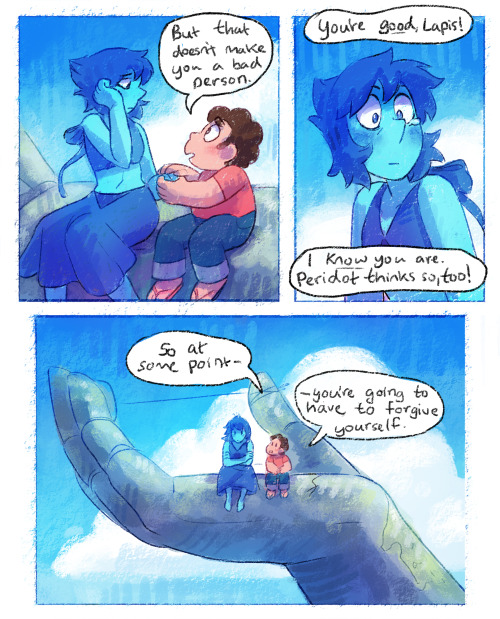




Chalcedony !
An amazing view of the cosmos.
What’s Up for November 2016
What’s Up for November: Venus at sunset, Jupiter at dawn, your last evening glimpse of Saturn until spring, and more meteors!

Through November 3, catch glimpses of a gibbous Venus, a crescent moon and ringed Saturn in the southwest sky just after sunset.

Wake up before sunrise every day this month to see Jupiter just above Spica, the brightest star in the constellation Virgo, shining in the east-southeast sky.
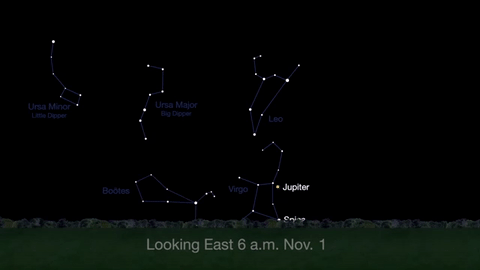
Just before dawn on November 23-24, see the waning crescent moon just above Jupiter.
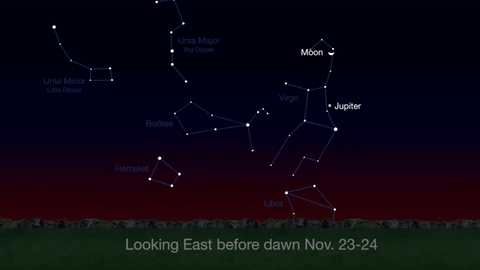
November is a great time to see the constellation Ceres as it glides past Cetus, the Whale and you will be able to see the dwarf planet move relative to the background stars, but you’ll need a telescope for this one.
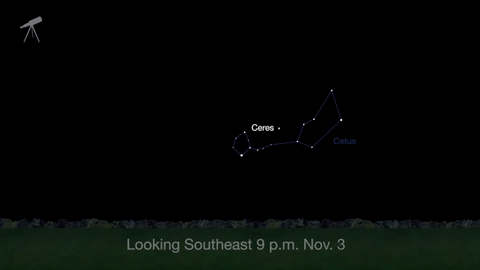
This month, just like last month, there will be three meteor showers–the Northern Tuarids, the Leonids and the November Orionids.
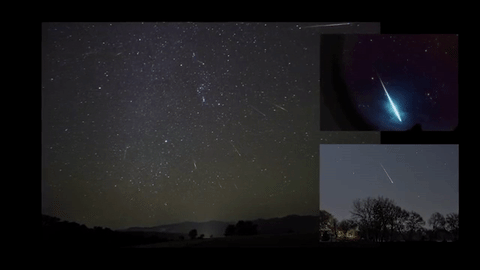
Watch the full November “What’s Up" video for more:
Make sure to follow us on Tumblr for your regular dose of space: http://nasa.tumblr.com.
Mysterious
Solar System: Things to Know This Week
Learn about the science of photonics to create space communications, get updates on Juno, mining data from Voyager for new discoveries and more.

1. Carried on a Beam of Light
One of our major priorities is to make space communications more efficient. While our communications systems have matured over the decades, they still use the same radio-frequency system developed in the earliest days of the agency. After more than 50 years, we’re investing in new ways to increase data rates while also finding more efficient communications systems. Photonics–generating, detecting and manipulating particles of light–may provide the solution.
+ See how it works

2. It’s No Joke: Two New Moons for the Seventh Planet
Voyager 2 spacecraft flew by Uranus 30 years ago, but researchers are still making discoveries using the data it gathered. A new study led by University of Idaho researchers suggests there could be two tiny, previously undiscovered moonlets orbiting near two of the planet’s rings.
+ Find out how they were discovered

3. Vortex of Mystery
As southern winter solstice approaches in the Saturn system, our Cassini spacecraft has revealed dramatic seasonal changes in the atmospheric temperature and composition of Saturn’s largest moon, Titan. Winter is taking a grip on Titan’s southern hemisphere, and a strong, whirling vortex has intensified in the upper atmosphere over the south pole.
+See more

4. The Spiders of Mars
Ten thousand volunteers viewing images of Martian south polar regions have helped identify targets for closer inspection, yielding new insights about seasonal slabs of frozen carbon dioxide and erosional features known as “spiders.” From the comfort of home, the volunteers have been exploring the surface of Mars by reviewing images from the Context Camera on our Mars Reconnaissance Orbiter and identifying certain types of seasonal terrains near Mars’ south pole.
+ Learn more and see how you can join in

5. Better Safe Than Sorry
On Oct. 18, when Juno’s onboard computer entered safe mode, early indications were a software performance monitor induced a reboot of the spacecraft’s onboard computer, turning off instruments and a few non-critical spacecraft components, and it confirmed the spacecraft was pointed toward the sun to ensure the solar arrays received power. On Oct. 24, the spacecraft left safe mode and has successfully completed a minor burn of its thruster engines in preparation for its next close flyby of Jupiter. The team is still investigating the cause of the reboot and assessing two main engine check valves. The burn, which lasted just over 31 minutes, changed Juno’s orbital velocity by about 5.8 mph (2.6 meters per second) and consumed about 8 pounds (3.6 kilograms) of propellant. Juno will perform its next science flyby of Jupiter on Dec. 11, with time of closest approach to the gas giant occurring at 12:03 p.m. EDT. The complete suite of Juno’s science instruments, as well as the JunoCam imager, will be collecting data during the upcoming flyby.
+ Get the details
Discover the full list of 10 things to know about our solar system this week HERE.
Make sure to follow us on Tumblr for your regular dose of space: http://nasa.tumblr.com
Love it! More like the original version

NGL, Reboot Upgrade looks sick with normal colors.
One day humans will live on another earth-like planet that is safe for us.
A Space Odyssey: 21 Years of Searching for Another Earth
There are infinite worlds both like and unlike this world of ours. We must believe that in all worlds there are living creatures and plants and other things we see in this world. – Epicurus, c. 300 B.C.

Are we alone? Are there other planets like ours? Does life exist elsewhere in the universe?
These are questions mankind has been asking for years—since the time of Greek philosophers. But for years, those answers have been elusive, if not impossible to find.
The month of October marks the 21st anniversary of the discovery of the first planet orbiting another sun-like star (aka. an exoplanet), 51 Pegasi b or “Dimidium.” Its existence proved that there were other planets in the galaxy outside our solar system.*

Even more exciting is the fact that astronomers are in hot pursuit of the first discovery of an Earth-like exoplanet orbiting a star other than the sun. The discovery of the so-called “blue dot” could redefine our understanding of the universe and our place in it, especially if astronomers can also find signs that life exists on that planet’s surface.
Astronomy is entering a fascinating era where we’re beginning to answer tantalizing questions that people have pondered for thousands of years.

Are we alone?
In 1584, when the Catholic monk Giordano Bruno asserted that there were “countless suns and countless earths all rotating around their suns,” he was accused of heresy.

But even in Bruno’s time, the idea of a plurality of worlds wasn’t entirely new. As far back as ancient Greece, humankind has speculated that other solar systems might exist and that some would harbor other forms of life.
Still, centuries passed without convincing proof of planets around even the nearest stars.

Are there other planets like ours?
The first discovery of a planet orbiting a star similar to the sun came in 1995. The Swiss team of Michel Mayor and Didier Queloz of Geneva announced that they had found a rapidly orbiting gas world located blisteringly close to the star 51 Pegasi.

This announcement marked the beginning of a flood of discoveries. Exotic discoveries transformed science fiction into science fact:
a pink planet
worlds with two or even three suns
a gas giant as light as Styrofoam
a world in the shape of an egg
a lava planet

But what about another Earth?
Our first exoplanet mission**, Kepler, launched in 2009 and revolutionized how astronomers understand the universe and our place in it. Kepler was built to answer the question—how many habitable planets exist in our galaxy?

And it delivered: Thousands of planet discoveries poured in, providing statistical proof that one in five sun-like stars (yellow, main-sequence G type) harbor Earth-sized planets orbiting in their habitable zones– where it’s possible liquid water could exist on their surface.

Now, our other missions like the Hubble and Spitzer space telescopes point at promising planetary systems (TRAPPIST-1) to figure out whether they are suitable for life as we know it.

Does life exist elsewhere in the universe?
Now that exoplanet-hunting is a mainstream part of astronomy, the race is on to build instruments that can find more and more planets, especially worlds that could be like our own.

Our Transiting Exoplanet Survey Satellite (TESS), set for launch in 2017-2018, will look for super-Earth and Earth-sized planets around stars much closer to home. TESS will find new planets the same way Kepler does—via the transit method—but will cover 400 times the sky area.

The James Webb Space Telescope, to launch in 2018, wil be our most powerful space telescope to date. Webb will use its spectrograph to look at exoplanet atmospheres, searching for signs of life.

We still don’t know where or which planets are in the habitable zones of the nearest stars to Earth. Searching out our nearest potentially habitable neighbors will be the next chapter in this unfolding story.

*The first true discovery of extrasolar planets was actually a triplet of dead worlds orbiting the remains of an exploded star, called a pulsar star. Two of three were found by Dr. Alexander Wolszczan in 1992– a full three years before Dimidium’s discovery. But because they are so strange, and can’t support life as we know it, most scientists would reserve the “first” designation for a planet orbiting a normal star.
** The French CoRoT mission, launched in 2006, was the first dedicated exoplanet space mission. It has contributed dozens of confirmed exoplanets to the ranks and boasts a roster of some of the most well-studied planets outside our solar system.
To stay up-to-date on our latest exoplanet discoveries, visit: https://exoplanets.nasa.gov
Make sure to follow us on Tumblr for your regular dose of space: http://nasa.tumblr.com
Galacticly awesome
Living and Working Aboard Station
Join us on Facebook Live for a conversation with astronaut Kate Rubins and the director of the National Institutes for Health on Tuesday, October 18 at 11:15 a.m. ET.
Astronaut Kate Rubins has conducted out of this world research aboard Earth’s only orbiting laboratory. During her time aboard the International Space Station, she became the first person to sequence DNA in space. On Tuesday, she’ll be live on Facebook with National Institute of Health director Francis Collins, who led the effort to map the human genome. You can submit questions for Kate using the hashtag #SpaceChat on Twitter, or during the live event. Here’s a primer on the science this PhD astronaut has been conducting to help inspire your questions:

Kate has a background in genomics (a branch of molecular genetics that deals with the study of genomes,specifically the identification and sequencing of their constituent genes and the application of this knowledge in medicine, pharmacy,agriculture, and other fields). When she began her tenure on the station, zero base pairs of DNA had been sequenced in space. Within just a few weeks, she and the Biomolecule Sequencer team had sequenced their one billionth base of DNA aboard the orbital platform.
“I [have a] genomics background, [so] I get really excited about that kind of stuff,” Rubins said in a downlink shortly after reaching the one billion base pairs sequenced goal.
Learn more about this achievement:
+First DNA Sequencing in Space a Game Changer
+Science in Short: One Billion Base Pairs Sequenced
Why is DNA Sequencing in Space a Big Deal?
A space-based DNA sequencer could identify microbes, diagnose diseases and understand crew member health, and potentially help detect DNA-based life elsewhere in the solar system.
+Why Sequencing DNA in Space is a Big Deal
https://youtu.be/1N0qm8HcFRI
Miss the Reddit AMA on the subject? Here’s a transcript:
+NASA AMA: We just sequenced DNA in space for the first time. Ask us anything!
NASA and Its Partnerships

We’re not doing this alone. Just like the DNA sequencing was a collaborative project with industry, so is the Eli Lilly Hard to Wet Surfaces investigation, which is a partnership between CASIS and Eli Lilly Co. In this experiment aboard the station, astronauts will study how certain materials used in the pharmaceutical industry dissolve in water while in microgravity. Results from this investigation could help improve the design of tablets that dissolve in the body to deliver drugs, thereby improving drug design for medicines used in space and on Earth. Learn more about what we and our partners are doing:
+Eli Lilly Hard to Wet Surfaces – been happening the last week and a half or so
Researchers to Test How Solids Dissolve in Space to Design Better Tablets and Pills on Earth
With our colleagues at the Stanford University School of Medicine, we’re also investigating the effects of spaceflight on stem cell-derived heart cells, specifically how heart muscle tissue, contracts, grows and changes in microgravity and how those changes vary between subjects. Understanding how heart muscle cells change in space improves efforts for studying disease, screening drugs and conducting cell replacement therapy for future space missions. Learn more:
+Heart Cells
+Weekly Recap From the Expedition Lead Scientist for Aug. 18, 2016
It’s Not Just Medicine

Kate and her crew mates have also worked on the combustion experiments.
Kate has also worked on the Bigelow Expandable Activity Module (BEAM), an experimental expandable capsule that docks with the station. As we work on our Journey to Mars, future space habitats are a necessity. BEAM, designed for Mars or other destinations, is a lightweight and relatively simple to construct solution. Kate has recently examined BEAM, currently attached to the station, to take measurements and install sensors.

Kate recently performed a harvest of the Plant RNA Regulation experiment, by removing seed cassettes and stowing them in cold stowage.

The Plant RNA Regulation investigation studies the first steps of gene expression involved in development of roots and shoots. Scientists expect to find new molecules that play a role in how plants adapt and respond to the microgravity environment of space, which provides new insight into growing plants for food and oxygen supplies on long-duration missions. Read more about the experiment:
+Plant RNA Harvest
NASA Astronaut Kate Rubins is participating in several investigations examining changes in her body as a result of living in space. Some of these changes are similar to issues experienced by our elderly on Earth; for example, bone loss (osteoporosis), cardiovascular deconditioning, immune dysfunction, and muscle atrophy. Understanding these changes and how to prevent them in astronauts off the Earth may help improve health for all of us on the Earth. In additional, the crew aboard station is also working on more generalized studies of aging.
+ Study of the effects of aging on C. elegans, a model organism for a range of biological studies.
Awesome
Solar System: Things to Know This Week
Learn the latest on Cassini’s Grand Finale, Pluto, Hubble Space Telescope and the Red Planet.
1. Cassini’s Grand Finale

After more than 12 years at Saturn, our Cassini mission has entered the final year of its epic voyage to the giant planet and its family of moons. But the journey isn’t over. The upcoming months will be like a whole new mission, with lots of new science and a truly thrilling ride in the unexplored space near the rings. Later this year, the spacecraft will fly repeatedly just outside the rings, capturing the closest views ever. Then, it will actually orbit inside the gap between the rings and the planet’s cloud tops.
Get details on Cassini’s final mission
The von Kármán Lecture Series: 2016
2. Chandra X-Rays Pluto

As the New Horizon’s mission headed to Pluto, our Chandra X-Ray Observatory made the first detection of the planet in X-rays. Chandra’s observations offer new insight into the space environment surrounding the largest and best-known object in the solar system’s outermost regions.
See Pluto’s X-Ray
3. … And Then Pluto Painted the Town Red

When the cameras on our approaching New Horizons spacecraft first spotted the large reddish polar region on Pluto’s largest moon, Charon, mission scientists knew two things: they’d never seen anything like it before, and they couldn’t wait to get the story behind it. After analyzing the images and other data that New Horizons has sent back from its July 2015 flight through the Pluto system, scientists think they’ve solved the mystery. Charon’s polar coloring comes from Pluto itself—as methane gas that escapes from Pluto’s atmosphere and becomes trapped by the moon’s gravity and freezes to the cold, icy surface at Charon’s pole.
Get the details
4. Pretty as a Postcard

The famed red-rock deserts of the American Southwest and recent images of Mars bear a striking similarity. New color images returned by our Curiosity Mars rover reveal the layered geologic past of the Red Planet in stunning detail.
More images
5. Things Fall Apart

Our Hubble Space Telescope recently observed a comet breaking apart. In a series of images taken over a three-day span in January 2016, Hubble captured images of 25 building-size blocks made of a mixture of ice and dust drifting away from the comet. The resulting debris is now scattered along a 3,000-mile-long trail, larger than the width of the continental U.S.
Learn more
Discover the full list of 10 things to know about our solar system this week HERE.
Make sure to follow us on Tumblr for your regular dose of space: http://nasa.tumblr.com


